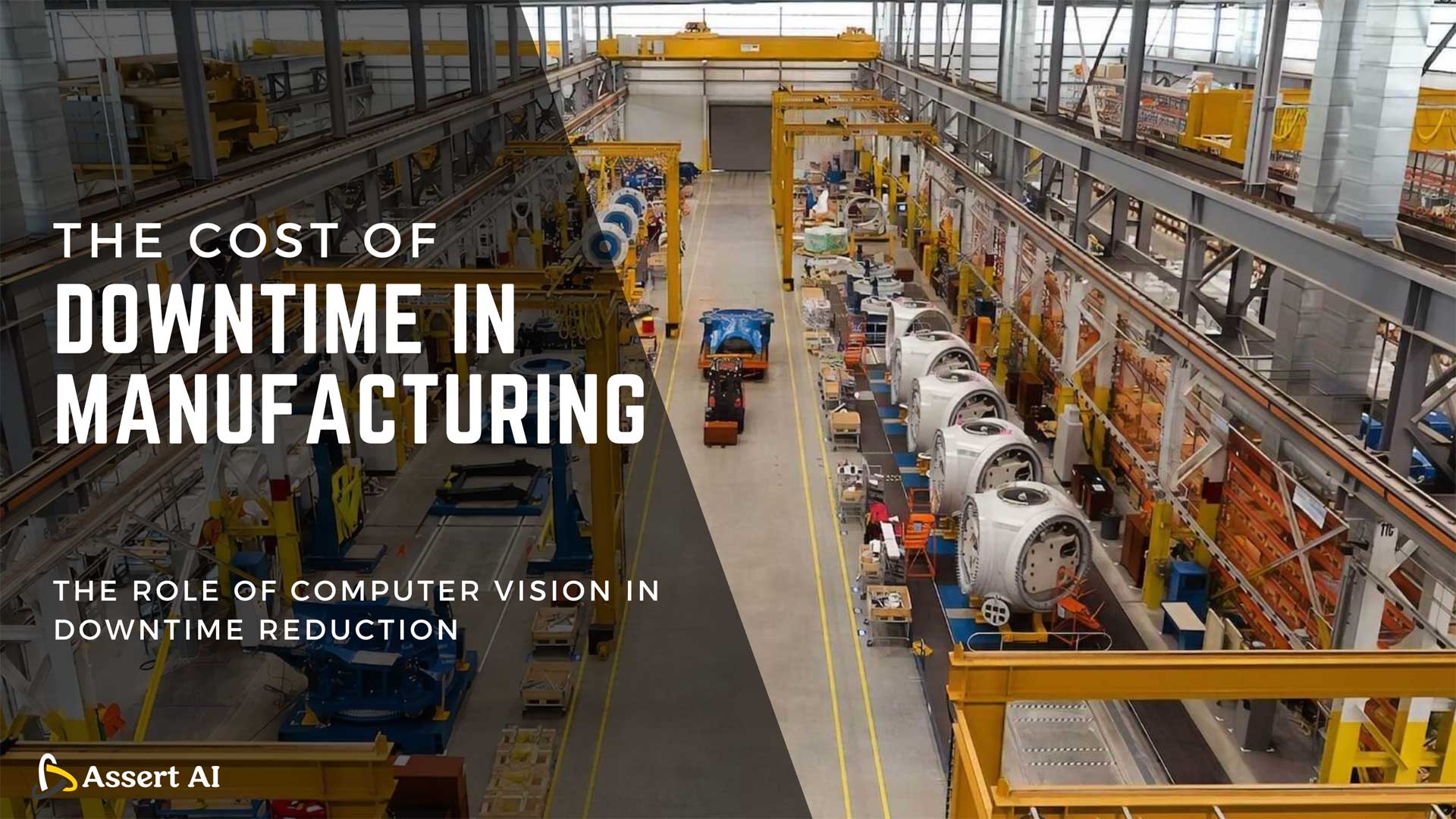In the realm of manufacturing, time is the ultimate currency, where every minute lost translates into significant financial repercussions. The concept of “downtime” looms large, representing periods of inactivity or non-production that manufacturers strive to minimize. But what exactly is the cost of downtime, and how can it be mitigated? In this article, we’ll delve into these questions, shedding light on the profound impact of downtime on manufacturing operations and how Computer Vision in Manufacturing offers a transformative solution.

Understanding Downtime Cost in Manufacturing
Downtime in manufacturing are those dreaded moments when machines or production lines grind to a halt, whether due to planned maintenance, unforeseen breakdowns, or organizational issues. Surprisingly, on average, manufacturers experience around 800 hours of downtime each year, or about 15 hours per week. The cost of downtime encompasses not only the direct loss of production but also indirect expenses like idle labour, missed deadlines, and reputational damage.

Recent research from Siemens underscores the escalating cost of downtime, with unplanned interruptions now devouring a staggering 11% of Fortune Global 500 companies’ annual turnover, equating to nearly $1.5 trillion. This represents a significant surge from $864 billion just two years ago, highlighting the urgency for effective solutions to mitigate downtime’s financial toll.
The Calculus of Manufacturing Downtime Cost
Calculating downtime cost is a nuanced endeavour, involving both direct and indirect factors. A basic formula for estimating downtime cost comprises direct costs, such as lost production value and repair expenses, coupled with indirect costs like lost sales opportunities and overtime labour. This formula serves as a foundational framework for manufacturers to gauge the potential financial impact of downtime and make informed decisions to minimize its occurrence.
Insights from Industry Research
Academic studies on downtime management underscore the critical importance of accurate data collection and strategic maintenance planning. Scholars advocate for automated downtime recording to enhance data precision, enabling more accurate cost calculations. Optimal maintenance strategies, integrating system reliability and preventive measures, emerge as key tactics to curtail downtime’s financial fallout. Additionally, the integration of smart manufacturing systems, equipped with predictive maintenance capabilities, offers a promising avenue for pre-emptive intervention, reducing maintenance costs and machine downtime.
The Role of Computer Vision in Manufacturing Downtime Reduction
Computer vision technology is a disruptor in the battle against downtime. By harnessing the power of data analysis and AI in Manufacturing, computer vision augments traditional inspection processes, offering real-time monitoring, anomaly detection, and predictive analytics capabilities. Here’s how Computer Vision in Manufacturing is revolutionizing downtime reduction:
- Anomaly Detection: Computer vision algorithms analyse visual data to swiftly identify deviations from normal operating conditions, such as equipment vibrations or component irregularities, facilitating early intervention to prevent breakdowns.
- Wear and Tear Assessment: Advanced image segmentation techniques enable precise monitoring of equipment degradation over time, aiding in proactive maintenance planning and minimizing unplanned downtime.
- Real-Time Monitoring: Computer vision systems provide continuous surveillance of production processes, detecting abnormal conditions and triggering timely alerts for maintenance teams to avert potential failures.
- Object Recognition and Tracking: By recognizing and tracking objects within the manufacturing environment, computer vision ensures the efficient utilization of tools and equipment, mitigating the risk of loss or mishandling.
- Inspection Automation: Automation of equipment inspection through computer vision streamlines maintenance procedures, enabling faster defect detection and reducing reliance on manual inspections.
- Predictive Analytics: Leveraging historical visual data and machine learning algorithms, computer vision facilitates predictive maintenance, enabling proactive interventions based on early warning signs of potential failures.
Also Read: How AI Transforms Quality Control
Computer vision emerges as a potent ally in the quest for downtime reduction, offering manufacturers unprecedented insights and capabilities to optimize maintenance practices and safeguard operational continuity.
The cost of downtime in manufacturing is not merely a financial metric; it’s a barometer of operational resilience and competitiveness. Manufacturing downtime is not a technical challenge; it’s a human challenge! With computer vision technology at their disposal, manufacturers are poised to turn the tide against downtime, ushering in an era of proactive maintenance and uninterrupted production. By embracing the transformative potential of computer vision, manufacturers can chart a course towards operational excellence and sustained growth in an increasingly dynamic industrial landscape.
